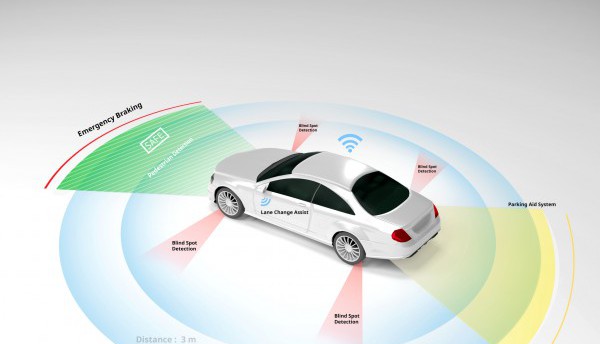
The evolution of intelligent driving technology is entering a pivotal stage, marked by the large-scale deployment of high-level advanced driver assistance systems (Level 2++) and the engineering maturation of Level 4 autonomous driving. Rather than viewing assisted and autonomous driving as separate tracks, Momenta sees them as two stages of the same technological continuum — connected by data, software architecture and safety validation frameworks.
Momenta’s approach embodies this transition. By leveraging a mass production-proven ADAS baseline, refined through millions of kilometers of real-world driving, the company continuously enhances its systems via closed-loop learning and large-scale data training.
Its Level 4 autonomous driving development follows the same philosophy: Building on mass production-grade technology and rigorous safety assurance, instead of experimental prototypes. This ensures cost efficiency, scalability and seamless integration into existing vehicle platforms — essential for true commercial viability.
To gain deeper insight, Owen Chen, Senior Principal Analyst at S&P Global, engaged with Huan Sun, co-founder, business development and marketing senior vice president of Momenta.

Key takeaways
- Collaborative approach with automakers: Momenta engages with automotive manufacturers in mainland China, Germany and Japan to align its ADAS with local safety standards and driving practices. This collaboration aims to facilitate the integration of technology in diverse regulatory environments.
- Market-specific adaptation: The company recognizes that the demand for advanced driving features differs across regions. Momenta is actively developing solutions for Germany and the rest of Europe, as well as Japan and other parts of Asia, focusing on compliance with local regulations while leveraging insights from its operations in mainland China.
- Emphasis on safety and explainability: Momenta incorporates safety measures and interpretability mechanisms into its software architecture. This approach is intended to enhance transparency in decision-making processes and ensure adherence to safety standards, which is critical for regulatory compliance.
- Readiness for deployment in new markets: Momenta's urban and highway NOA (Navigate on Autopilot) technologies are positioned for potential deployment outside of mainland China, with its existing applications in Europe. The company is preparing to expand its offerings in response to evolving regulatory frameworks in these markets.
S&P Global Mobility: Momenta has collaborated with nearly all OEM and JV partners of American, Japanese and German automakers in China. Could you share Momenta’s overall strategy for international markets and how you plan to build partnerships and trust in mature markets such as Germany and Japan?
Huan Sun: We deploy a mature, mass production-proven ADAS baseline from China, which has already been integrated into hundreds of thousands of vehicles. This system is then rapidly adapted through local data training and algorithm calibration.
Equally important are partnership and transparency. In markets such as Germany and Japan, we collaborate closely with local automaker engineering teams and validation partners to meet local safety standards and accommodate driving habits. Our partnerships in China have fostered trust in the world's largest car market. These relationships, combined with our ability to adapt to various regulatory environments — such as the EU's GDPR [General Data Protection Regulation] — form a solid foundation for further global collaboration.
Momenta's technology is already making an impact in Europe: IM Motors vehicles equipped with Momenta's L2 driver assistance software are now available for purchase in the UK and Norway, demonstrating our readiness for comparable European markets like Germany. Additionally, Lotus commenced production with our system in 2023, and further global automaker programs are scheduled for start of production (SOP) in 2025.
There are significant differences in autonomous driving market demands across China, Germany and Japan. How does Momenta tailor its solutions to serve local customers in these markets?
Market demands for advanced driving assistance features vary significantly across countries. In recent years, we have observed a faster adoption of these functions in China, where they have become standard equipment in many vehicle models. However, we anticipate that in Germany and Japan, these features will also become highly sought after once regulatory frameworks allow for their meaningful deployment.
We are actively developing our solutions in markets like Germany and Japan to provide the best possible products for customers within the existing regulatory boundaries. We are prepared to offer the same advanced features currently available in China as soon as it becomes legally feasible. To achieve this, we adapt our software to local environments and conditions. For instance, in Europe, overtaking on highways is strictly limited to the left lane, while in China, lane usage is more fluid.
To address these differences, Momenta has established dedicated regional R&D teams focused on local development and delivery. These teams ensure our solutions are fully aligned with regional traffic regulations, road conditions and user preferences. Underpinning this local focus is a global foundation: All regional teams share the same development processes, safety standards and engineering platforms refined through our large-scale deployments. Our driving-scenario library enables training, testing and validation across millions of kilometers of diverse road conditions. This guarantees that, whether in Shanghai, Munich or Tokyo, our products provide a familiar, consistent and safe driving experience tailored to each region, with each market contributing to global development and continuous learning.
We noticed Momenta’s collaboration with Uber to conduct robo-taxi testing in Munich. Could you share your overall view on the technology road map for robo-taxis and how you balance pure vision versus lidar solutions?
Uber is an excellent partner for us, as their global mobility expertise complements our AI-first autonomous driving technology. Our collaboration in Munich reflects both companies' shared commitment to delivering safe, scalable robo-taxi services on real roads. It also demonstrates Uber's confidence in Momenta's technology and our readiness to operate within Germany's rigorous safety and regulatory environment.
Our perspective on the robo-taxi technology road map is clear: True scalability can only be achieved when autonomous driving is developed on mass-production vehicles rather than one-off prototypes. Building on production platforms ensures cost efficiency, manufacturability and reliability. This is made possible by Momenta's hardware-agnostic software architecture, which can be integrated across multiple automakers.
From a technological standpoint, Momenta believes that utilizing the same platform and core technology for both L2+ and L4 systems is the fastest route to scalable robotaxis. Our L4 system is built on this shared foundation and incorporates hardware and software redundancy to meet all regulatory and safety requirements. This unified approach enables rapid iteration through our end-to-end Flywheel Big Model, applied consistently across L2+ consumer and L4 robo-taxi fleets.
International automakers, especially in Germany and Japan, place high emphasis on safety and software explainability. How does Momenta address safety and explainability challenges in end-to-end software architectures?
Safety is not merely a requirement; it is the foundation of every collaboration we establish. Our OEM partners expect systems that are not only high-performing but also transparent and verifiable. To meet these expectations, we integrate interpretability mechanisms into our end-to-end architecture, enabling engineers to trace the decisions made by the model. This capability helps partners validate system behavior under both standard and edge-case conditions.
While our core system follows an end-to-end design, it operates within a comprehensive safety framework that ensures driving comfort, stability, and full compliance with local traffic regulations. This framework serves as a safety guardrail, monitoring the model’s output in real-time and enforcing behaviors consistent with road rules and user expectations.
We also maintain a scenario library that allows our development teams to isolate, improve and compare the system’s performance in specific driving situations. Even within an end-to-end model, this structured approach guarantees full traceability, enabling engineers to benchmark progress and enhance targeted scenarios as the system evolves.
Momenta adheres to rigorous safety processes aligned with ISO 26262, ISO/PAS 8800, and ISO 21448 standards, ensuring functional and operational safety from concept to production. Our safety concept has been reviewed and refined in collaboration with leading global automakers. For example, our L3 system design features functional hardware redundancy, incorporating dual SoCs [system-on-chips] and MCUs [microcontroller units] operating on independent power domains.
Momenta’s urban NOA technology is well established in China. Do you foresee deploying this technology in Europe or Japan?
Momenta has developed mature highway and urban NOA systems that are technically ready for deployment outside of China. Our L2 driver assistance systems are already operational in Europe, powering vehicles such as Lotus models and IM Motors vehicles currently available in the UK and Norway.
While Europe’s regulatory framework for L2++ functions is still evolving, the outlook is promising. Once clearer homologation and operational rules are established, we anticipate strong momentum for the rollout of advanced urban and highway NOA features.
In contrast, regulations for L2+ and higher-level systems in China are more clearly defined, and Momenta’s advanced NOA functions are already in mass production with several automakers. As the European regulatory environment develops, Momenta will be well-positioned to rapidly expand these mature capabilities, supported by our localized software stack, validation processes and data-adaptive Flywheel architecture.
In the Japanese market, does Momenta focus more on active safety and ADAS development, or on deploying urban NOA solutions?
In our discussions with several Japanese automakers, the terms we hear most frequently are "safety" and "zero accidents." Whether it pertains to traditional ADAS, highway NOA or urban NOA, the pursuit of these goals remains consistent.
Leveraging vast amounts of data, Momenta has conducted extensive analyses of Japan’s unique regulatory scenarios for ADAS and is now fully compliant with Japanese regulations.
Furthermore, Momenta has already achieved both highway and urban NOA in Japan. The adaptation of our mainline solution is progressing smoothly and has received very positive feedback from customers.
As a result, Momenta is fully capable of delivering ADAS, highway NOA and urban NOA solutions. The actual rollout will depend on each automaker's mass production strategy.
Momenta collaborates with luxury brands such as Mercedes-Benz and BMW. How do you differentiate the driving experience from volume brands while balancing comfort, user experience, cost and reliability?
Safety is the shared value we provide to all our customers. The distinction between volume and premium brands lies in the integration of each brand’s unique DNA into intelligent driving functionalities. We collaborate with each automaker to design this brand-specific DNA, aligning it with their definition of what constitutes a “good autonomous driver” across various driving scenarios.
For example, the recently launched Audi E5 Sportback in China features a driver assistance system developed by combining Audi’s driving DNA with Momenta’s Flywheel Big Model. This collaboration enables the vehicle to offer three assisted driving modes, allowing drivers to enjoy advanced assistance while still experiencing Audi’s signature driving dynamics.








